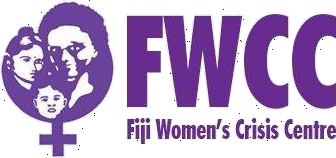Elizabeth Cox, UNIFEM Pacific’s Regional Programme Director, says violence against women is a major factor contributing to the transmission of HIV and other sexually transmitted infections (STIs) in the Pacific region, just as it is elsewhere around the world.
She was speaking at the Fiji Women’s Crisis Centre’s (FWCC) Fifth Pacific Regional Meeting on Violence Against Women at the Naviti Resort in Fiji on Tuesday.
A strategic approach to addressing the “twin pandemics” of gender-based violence and HIV/AIDS is essential and is a major part of UNIFEM’s programmes.
Cox said an understanding of gender, human rights and the link between violence against women (VAW) and HIV transmission is essential to make efforts to reduce the spread of HIV more effective.
“The link is not as apparent as we think of it but it becomes clear when one understands gender and human rights,” says Cox.
Because of women’s lack of power and decision-making in their relationships, they are unable to talk about key issues and risks to sexual health in their intimate relationships, in their family, community or wider society.
Cox says men’s power over women is also expressed in intimate, sexual relationships. Women are often not in a position to discuss sex, sexual risk or to negotiate safe sex. This greatly increases their risk of contracting STIs and HIV infection.
“Women who insist on the use of condoms or to refuse to have sex with their partner because of STIs or because they believe he might have multiple sex partners risk rejection, rape or a beating.
“So too often they remain silent and worry about the risk of infection, pregnancy, etc.”
Apart from women’s inability to protect themselves from exposure to HIV and STIs, they are often the first partner to be diagnosed due to HIV testing often taking place at ante-natal clinics. If diagnosed positive women will bear the brunt of the blame, and suffer severe social and economic consequences, regardless of how faithful they have been.
Cox says sexual and gender-based violence increases where men are mobile and have money – “the three Ms” – a phenomenon that can be witnessed in areas where large-scale commercial development is under way and large amounts of cash are paid to male landowners. The tend to apply this money to personal leisure and pleasure.
Easy access to sexually explicit and violent films, television shows and internet sites normalise images of “dead and ravished women’s bodies” and are likely to de-sensitise the whole of society to sexual violence. Much more attention to these contributing factors to violence against women and girls is needed.
Women are also at an increased risk of being sexually abused during times of heightened powerlessness and breakdown of law and order, such as after being displaced by natural disasters or during conflicts. Women with disabilities are also at high risk of sexual abuse and other forms of gender-based violence.
Cox says understanding and addressing women’s experiences of violence must be at the core of the local and national responses to STIs, HIV/AIDS.
The Fiji Women’s Crisis Centre’s Regional Training Programme held annually provides an important opportunity for people working in the area of HIV/AIDS and STIs to gain an in-depth understanding of gender and human rights and how violence against women increases the spread of HIV among women and girls.
The weeklong regional meeting ends on Friday, June 12.
